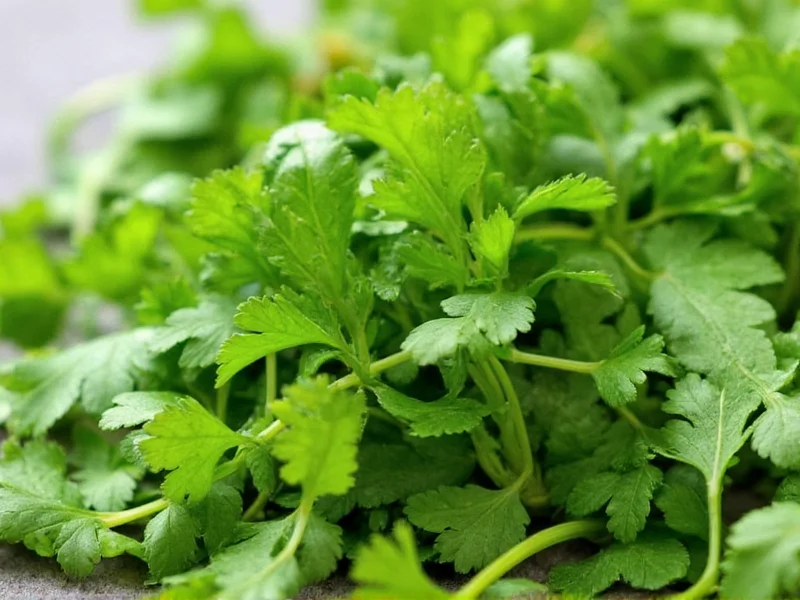Understanding the terminology confusion between coriander and cilantro is essential for navigating global recipes and grocery shopping. This common culinary herb sparks frequent debates among home cooks and professional chefs alike, primarily due to inconsistent naming across English-speaking regions. Let's clarify this botanical identity once and for all with precise, actionable information.
Botanical Identity and Naming Origins
The plant Coriandrum sativum produces both the fresh leafy greens and the dried seeds used widely in global cuisines. The linguistic divergence stems from historical language evolution:
- The Spanish term cilantro specifically refers to the fresh leaves and stems
- The English word coriander historically encompassed the entire plant
- Modern British English adopted “coriander” for the fresh herb, reserving “coriander seeds” for the dried fruit
- American English borrowed “cilantro” from Spanish to distinguish the leaves from the seeds
| Region | Term for Fresh Leaves | Term for Dried Seeds |
|---|---|---|
| United States & Canada | Cilantro | Coriander |
| United Kingdom & Australia | Coriander | Coriander seeds |
| India & Southeast Asia | Dhaniya (leaves) | Dhaniya (seeds) |
| Mexico & Latin America | Cilantro | Comino or cilantro en grano |
Physical Characteristics and Culinary Properties
Fresh coriander/cilantro features delicate, lacy green leaves growing in a rosette pattern from slender stems. The herb delivers a distinctive citrusy, slightly peppery flavor with soapy notes that some people genetically perceive due to olfactory receptor variations. This polarizing characteristic explains why approximately 21% of the population finds fresh coriander/cilantro unpalatable.
The fresh leaves contain volatile compounds like (E)-2-decenal that provide their signature aroma. These compounds degrade rapidly when exposed to heat, which is why culinary experts universally recommend adding fresh coriander/cilantro at the end of cooking or as a garnish to preserve maximum flavor impact.
Practical Usage Guidance
When following recipes that specify either term, consider these practical guidelines:
- Substitution accuracy: Fresh coriander and cilantro are 100% interchangeable in recipes—no conversion needed
- Storage techniques: Treat cut stems like flowers—place in water, cover loosely with plastic, and refrigerate for up to 10 days
- Drying limitations: Dried coriander leaves lose most volatile compounds—never substitute dried for fresh in equal measures
- Seed confusion: Coriander seeds come from the same plant but have completely different flavor chemistry (warm, citrusy, slightly sweet)
Regional Terminology in Practice
The naming confusion creates genuine challenges in international cooking. Consider these real-world examples:
- An American chef following a British recipe calling for “coriander” might mistakenly use coriander seeds instead of fresh leaves
- A UK resident shopping in an American grocery store might overlook cilantro labeled under “cilantro”
- Indian recipes often use “dhaniya” for both fresh leaves and dried seeds, requiring context to determine which form is needed
Professional food writers increasingly specify “fresh coriander leaves” or “cilantro (fresh coriander leaves)” to prevent confusion. When in doubt, examine recipe context—if instructions mention chopping leaves or using as garnish, it refers to the fresh herb regardless of terminology used.
Scientific Verification
Botanical authorities universally confirm this identity. The USDA PLANTS Database, Royal Horticultural Society, and World Flora Online all classify Coriandrum sativum with no distinction between “coriander” and “cilantro” beyond regional naming preferences. DNA analysis shows identical genetic markers regardless of what name appears on grocery labels.
Food science research published in the Journal of Agricultural and Food Chemistry confirms identical chemical composition between samples labeled as “coriander” and “cilantro,” with volatile compound profiles varying only due to growing conditions, not nomenclature.











 浙公网安备
33010002000092号
浙公网安备
33010002000092号 浙B2-20120091-4
浙B2-20120091-4